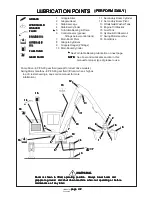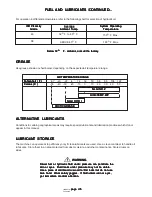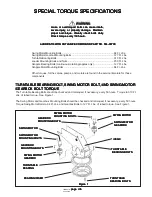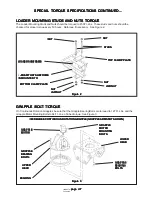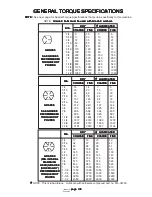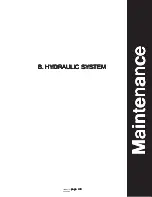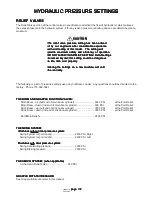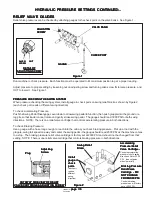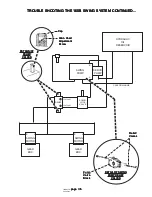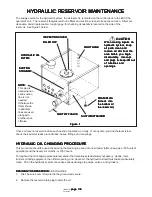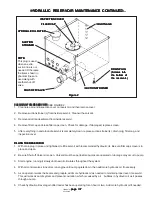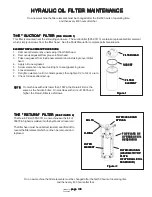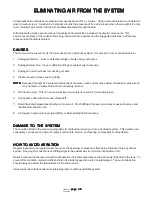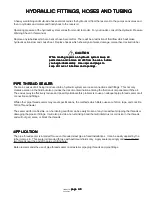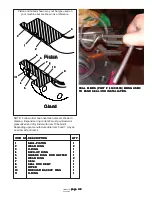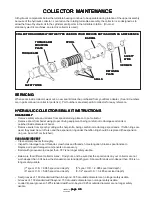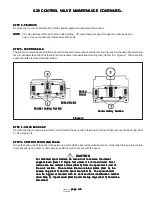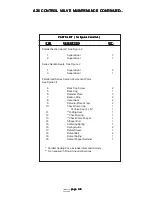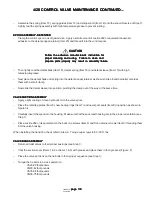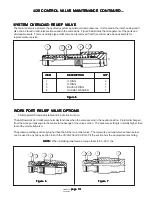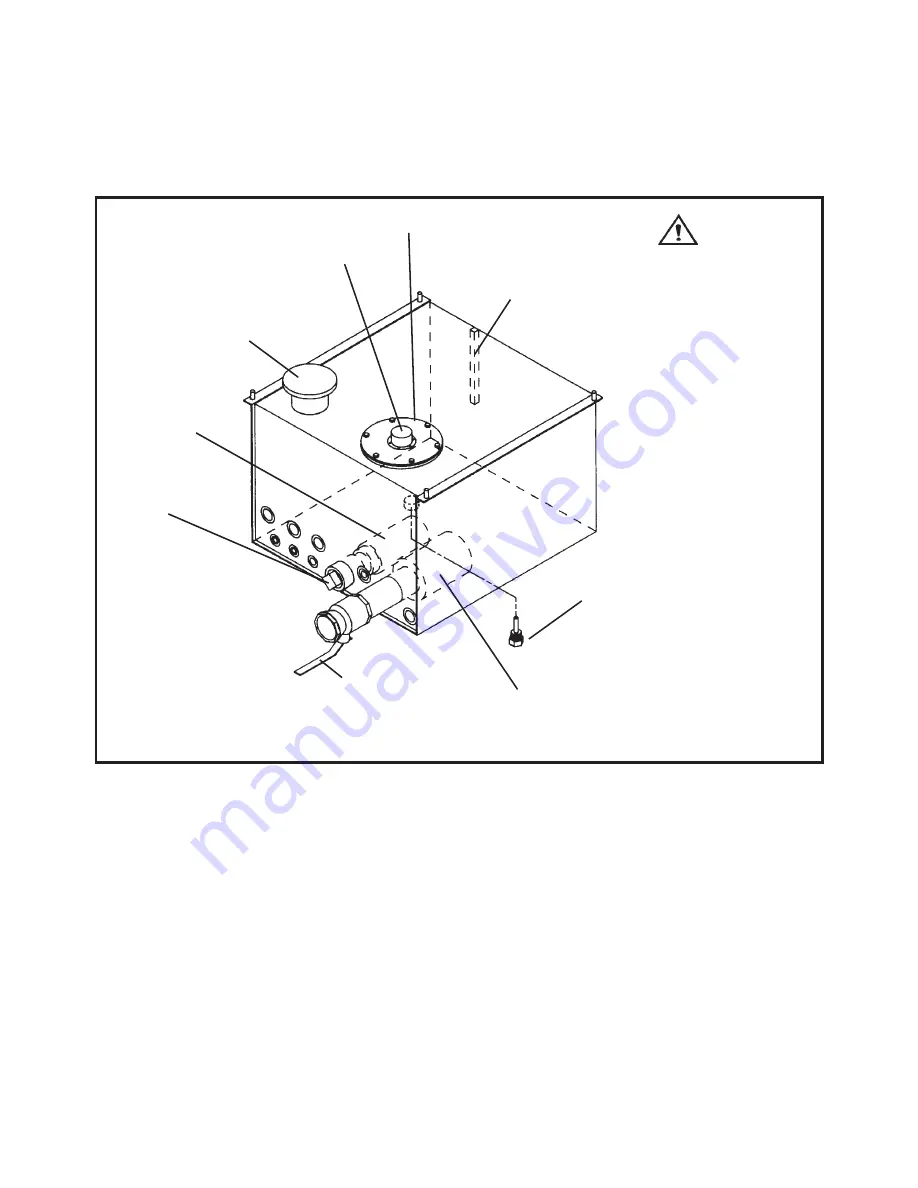
page 36
page 36
page 36
page 36
page 36
160B&C TM
800-00140
The supply source for the hydraulic system, the oil reservoir, is located on the control deck to the left of the
operator's cab. The reservoir features return line filters and suction screens to keep the oil clean. Filters are
cleanable, and/or replaceable. A sight gage for checking oil quantity is located on the side of the
reservoir. See Figure 1 below.
HYDRAULIC RESERVOIR MAINTENANCE
HYDRAULIC RESERVOIR MAINTENANCE
HYDRAULIC RESERVOIR MAINTENANCE
HYDRAULIC RESERVOIR MAINTENANCE
HYDRAULIC RESERVOIR MAINTENANCE
INSPECTION COVER
INSPECTION COVER
INSPECTION COVER
INSPECTION COVER
INSPECTION COVER
FILLER CAP
FILLER CAP
FILLER CAP
FILLER CAP
FILLER CAP
HYDRAULIC OIL
HYDRAULIC OIL
HYDRAULIC OIL
HYDRAULIC OIL
HYDRAULIC OIL
FILTER
FILTER
FILTER
FILTER
FILTER
SUCTION STRAINER
SUCTION STRAINER
SUCTION STRAINER
SUCTION STRAINER
SUCTION STRAINER
DRAIN PLUG
DRAIN PLUG
DRAIN PLUG
DRAIN PLUG
DRAIN PLUG
(Screws into
(Screws into
(Screws into
(Screws into
(Screws into
the bottom of
the bottom of
the bottom of
the bottom of
the bottom of
the reservoir.)
the reservoir.)
the reservoir.)
the reservoir.)
the reservoir.)
SHUT-OFF VALVE
SHUT-OFF VALVE
SHUT-OFF VALVE
SHUT-OFF VALVE
SHUT-OFF VALVE
SUCTION
SUCTION
SUCTION
SUCTION
SUCTION
STRAINER
STRAINER
STRAINER
STRAINER
STRAINER
NOTE:
NOTE:
NOTE:
NOTE:
NOTE:
This plug is
used when an
extra suction
line is not
needed.
Otherwise the
items shown
in phantom
lines are used
along with
another shut-
off valve.
SIGHT GAGE
SIGHT GAGE
SIGHT GAGE
SIGHT GAGE
SIGHT GAGE
When making repairs on
When making repairs on
When making repairs on
When making repairs on
When making repairs on
hydraulic system, keep
hydraulic system, keep
hydraulic system, keep
hydraulic system, keep
hydraulic system, keep
all
all
all
all
all parts clean and
parts clean and
parts clean and
parts clean and
parts clean and
remove
remove
remove
remove
remove all dirt from the
all dirt from the
all dirt from the
all dirt from the
all dirt from the
area
area
area
area
area before you begin
before you begin
before you begin
before you begin
before you begin
dis
dis
dis
dis
disassembly. Use caps
assembly. Use caps
assembly. Use caps
assembly. Use caps
assembly. Use caps
and
and
and
and
and plugs to keep dirt out
plugs to keep dirt out
plugs to keep dirt out
plugs to keep dirt out
plugs to keep dirt out
of
of
of
of
of tubelines and
tubelines and
tubelines and
tubelines and
tubelines and
openings.
openings.
openings.
openings.
openings.
CAUTION
CAUTION
CAUTION
CAUTION
CAUTION
Figure 1
Figure 1
Figure 1
Figure 1
Figure 1
Check oil level in reservoir before each period of operation, or daily. If, at any time, you find the level is low,
check the loader for leaks around tubes, hoses, fittings, and couplings.
HYDRAULIC OIL CHANGING PROCEDURE
HYDRAULIC OIL CHANGING PROCEDURE
HYDRAULIC OIL CHANGING PROCEDURE
HYDRAULIC OIL CHANGING PROCEDURE
HYDRAULIC OIL CHANGING PROCEDURE
This procedure should be used once during the breaking in period of a new loader (after one week, or 50 hours of
operation) and then every six months, or 1000 hours.
Throughout the oil changing procedure remember that cleanliness is absolutely necessary. Hands, tools,
funnels, oil filling equipment, the oil filler opening, and, above all, the hydraulic oil itself must be kept absolutely
clean. Dirt in the hydraulic system can cause serious damage to pumps, valves, and cylinders.
DRAINING THE RESERVOIR
DRAINING THE RESERVOIR
DRAINING THE RESERVOIR
DRAINING THE RESERVOIR
DRAINING THE RESERVOIR SEE FIGURE 2.
1. First, be sure boom is lowered to the ground and secure.
2. Remove the reservoir drain plug to drain the oil.

